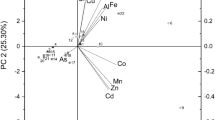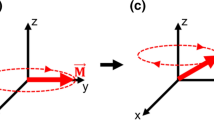Abstract
When fatty acids in fish are analyzed, results in percentage form (profile analysis) are mostly reported. However, the much more useful results expressed as mg/100 g (absolute analysis) is the main information required. Absolute methods based on calibration curves are of good accuracy but with a high degree of complexity if applied to a great number of analytes. Procedures based on the sequence profile analysis–total FA determination–absolute analysis may be suitable for routine use, but suffer from a number of uncertainties that have never been really resolved. These uncertainties are mainly related to the profile analysis. In fact, most profile analyses reported in the literature disagree about the number and type of fatty acids monitored as well as about the total percentage to assign to their sum so leading to possible inaccuracies; in addition the instrumental response factor for all FAME (fatty acid methyl esters) is often considered as a constant, but this is not exactly true. In this work, a set of 24 fatty acids was selected and studied on 12 fish species in the Mediterranean area (variable in lipid content and month of sampling): in our results, and in these species, this set constitutes, on average, 90 ± 3 % of the total fatty acid content. Moreover the error derived from the assumption of a unique response factor was investigated. Two different detection techniques (GC-FID and GC–MS) together with two capillary columns (different in length and polarity) were used in order to acquire complementary data on the same sample. With the protocol here proposed absolute analyses on the 12 cited species are easily achievable by the total FA determination procedure. The accuracy of this approach is good in general, but in some cases (DHA for example) is lower than the accuracy of calibration-based methods. The differences were evaluated on a case by case basis.





Similar content being viewed by others
Abbreviations
- FAME:
-
Fatty acid methyl ester(s)
- GC-FID:
-
Gas chromatography with flame ionization detector
- GC–MS:
-
Gas chromatography mass spectrometry
- EI:
-
Electron ionization
- DHA:
-
Docosahexaenoic acid (22:6n-3)
- FA:
-
Fatty acid(s)
- SFA:
-
Saturated fatty acid(s)
- EPA:
-
Eicosapentaenoic acid (20:5n-3)
- PUFA:
-
Polyunsaturated fatty acid(s)
- LC-PUFA:
-
Long chain polyunsaturated fatty acid(s)
- RF:
-
Response factor
References
Krogmann A, Staiger K, Haas C, Gommer N, Peter A, Heni M, Machicao F, Häring HU, Staiger H (2011) Inflammatory response of human coronary artery endothelial cells to saturated long-chain fatty acids. Microvasc Res 81:52–59
Paisley C, Lloyd H, Sparks P, Mela DJ (1995) Consumer perceptions of dietary changes for reducing fat intake. Nutr Res 5:1755–1766
Moyad MA (2005) An introduction to dietary/supplemental omega-3 fatty acids for general health and prevention: part II. Urol Oncol Semin O I 23:36–48
Torrejon C, Jung UJ, Deckelbaum RJ (2007) n-3 Fatty acids and cardiovascular disease: actions and molecular mechanisms. Prostag Leukotr Ess 77:319–326
Lavie CJ, Milani RV, Mehra MR, Ventura HO (2009) Omega-3 polyunsaturated fatty acids and cardiovascular diseases. J Am Coll Cardiol 54:585–594
Orban E, Masci M, Nevigato T, Di Lena G, Casini I, Caproni R, Gambelli L, De Angelis P, Rampacci M (2006) Nutritional quality and safety of whitefish (Coregonus lavaretus) from Italian lakes. J Food Compos Anal 19:737–746
Orban E, Nevigato T, Masci M, Di Lena G, Casini I, Caproni R, Gambelli L, De Angelis P, Rampacci M (2007) Nutritional quality and safety of European perch (Perca fluviatilis) from three lakes of Central Italy. Food Chem 100:482–490
Whelton SP, He J, Whelton PK, Muntner P (2004) Meta-analysis of observational studies on fish intake and coronary heart disease. Am J Cardiol 93:1119–1123
Williams CD, Whitley BM, Hoyo C, Grant DJ, Iraggi JD, Newman KA, Gerber L, Taylor LA, McKeever MG, Freedland SJ (2011) A high ratio of dietary n-6/n-3 polyunsaturated fatty acids is associated with increased risk of prostate cancer. Nutr Res 31:1–8
Kalogeropoulos N, Panagiotakos DB, Pitsavos C, Chrysohoou C, Rousinou G, Toutouza M, Stefanadis C (2010) Unsaturated fatty acids are inversely associated and n-6/n-3 ratios are positively related to inflammation and coagulation markers in plasma of apparently healthy adults. Clin Chim Acta 411:584–591
Harris WS, Assaad B, Poston WC (2006) Tissue omega-6/omega-3 fatty acid ratio and risk for coronary artery disease. Am J Cardiol 98:19i–26i
Memon NN, Talpur FN, Bhanger MI, Balouch A (2011) Changes in fatty acid composition in muscle of three farmed carp fish species (Labeo rohita, Cirrhinus mrigala, Catla catla) raised under the same conditions. Food Chem 126:405–410
Jabeen F, Chaudhry AS (2011) Chemical compositions and fatty acid profiles of three freshwater fish species. Food Chem 125:991–996
Njinkoué JM, Barnathan G, Miralles J, Gaydou EM, Samb A (2002) Lipids and fatty acids in muscle, liver and skin of three edible fish from the Senegalese coast: Sardinella maderensis, Sardinella aurita and Cephalopholis taeniops. Comp Biochem Phys B 131:395–402
Pacetti D, Alberti F, Boselli E, Frega NG (2010) Characterisation of furan fatty acids in Adriatic fish. Food Chem 122:209–215
Jalali-Heravi M, Vosough M (2004) Characterization and determination of fatty acids in fish oil using gas chromatography–mass spectrometry coupled with chemometric resolution techniques. J Chromatogr A 1024:165–176
Juárez M, Juárez A, Aldai N, Avilés C, Polvillo O (2010) Validation of a gas–liquid chromatographic method for analysing samples rich in long chain n-3 polyunsaturated fatty acids: application to seafood. J Food Compos Anal 23:665–670
Schreiner M (2005) Quantification of long chain polyunsaturated fatty acids by gas chromatography. Evaluation of factors affecting accuracy. J Chromatogr A 1095:126–130
Weihrauch JL, Posati LP, Anderson BA, Exler J (1977) Lipid conversion factors for calculating fatty acids contents of foods. J Am Oil Chem Soc 54:36–40
Bligh EG, Dyer WJ (1959) A rapid method of total lipid extraction and purification. Can J Biochem Phys 37:911–917
Kinsella JE, Shimp JL, Mai J, Weihrauch J (1977) Fatty acid content and composition of freshwater finfish. J Am Oil Chem Soc 54:424–429
US Department of Agriculture, Agricultural Research Service (2009) Composition of foods. Raw, processed, prepared. USDA National Nutrient Database for Standard Reference, Release 22:18
Dodds ED, McCoy MR, Rea LD, Kennish JM (2005) Gas chromatography quantification of fatty acids methyl esters: flame ionization detector vs. electron impact mass spectrometry. Lipids 40:419–428
European Union Regulation, Commission regulation (EEC) No 2568/91 (1991) Analysis by gas chromatography of methyl esters of fatty acids: use of correction factors. Official Newspaper of the European Community 1991R2568:59–60
AOCS (1989) Official method Ce 1b-89. In: Firestone D (ed) Official methods and recommended practices of the American oil chemists’ society. Champaign, IL
Thurnhofer S, Vetter W (2005) A gas chromatography/electron ionization–mass spectrometry-selected ion monitoring method for determining the fatty acid pattern in food after formation of fatty acid methyl esters. J Agric Food Chem 53:8896–8903
Author information
Authors and Affiliations
Corresponding author
About this article
Cite this article
Nevigato, T., Masci, M., Orban, E. et al. Analysis of Fatty Acids in 12 Mediterranean Fish Species: Advantages and Limitations of a New GC-FID/GC–MS Based Technique. Lipids 47, 741–753 (2012). https://doi.org/10.1007/s11745-012-3679-9
Received:
Accepted:
Published:
Issue Date:
DOI: https://doi.org/10.1007/s11745-012-3679-9




